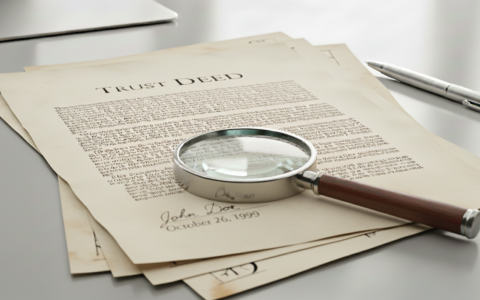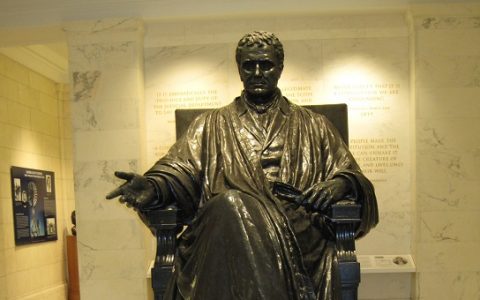BDBNs and reversionary beneficiary nominations – which take precedence?

Succession planning is obviously a very important element of being a member of a superannuation fund, as the benefits are basically expected to be paid to the member when they retire, or to their dependants should they pass away.
Ordinarily, under most trust deeds for superannuation funds, the trustee has discretion about how the benefits of a deceased member are to be paid (unless the deed has been amended to take away this discretion). In some circumstances, the members will prefer this flexibility, as it means the trustee can look at all the circumstances on the death of the member, and work out the best way to pay their death benefits (and to whom). Of course, this is only an advantage if the surviving trustee(s) can be relied on to act in the best interests of the deceased’s dependants, which may not always be the case.
Therefore, some members might want to take steps so that the trustee has NO discretion about the eventual payment of their death benefits. The two main ways that the trustee can be ‘forced’ to pay the benefits in a particular way are by making a ‘binding death benefit nomination’ (or ‘BDBN’) or, where the member is drawing a pension, by making their pension a ‘reversionary pension’ (which means that, on their death, the pension does not stop, but instead continues to be paid to a nominated ‘reversionary beneficiary’, such as their surviving spouse).
There are pros and cons with each method of binding the trustee, but an important issue that members need to consider is: what happens if they are drawing a reversionary pension AND they have made a BDBN regarding their death benefits, as well?
Initially, it is important to note that it is entirely possible, and sometimes beneficial, to have both a reversionary pension and a BDBN. This will especially be the case if the pensioner has both a pension interest (or more than one pension interest) and an accumulation interest. The BDBN may be worded so as to direct the trustee regarding the payment of their non-reversionary pensions, and the pension documentation can detail the reversionary beneficiaries of any reversionary pension(s).
However, a problem may arise where a BDBN purports to direct the trustee in relation to a reversionary pension – especially where it directs the trustee to pay the pension benefits to someone other than the reversionary beneficiary. Unfortunately, this situation is not covered by the legislation, and so needs to be dealt within the SMSF’s trust deed. If there is nothing in the deed about how to resolve this deadlock, whichever decision they make, the trustees may find themselves in court, being sued by an aggrieved family member who believes that they have been wronged by the trustee.
Therefore, it is best that the SMSF’s trust deed explicitly deal with this possibility. NTAA Corporate’s SMSF trust deed does indeed deal with this, and basically states that, in the event of an inconsistency, a reversionary nomination takes precedence over an inconsistent BDBN (refer to clause 38(g) of our current trust deed, which states that the Trustee must follow a reversionary nomination, and to clause 44.3, which states that a BDBN is binding on the Trustee, but subject to any of the Trustee’s obligations in clause 38(g)).
The main reason our deed provides that a reversionary nomination takes precedence over a BDBN is because, technically, a true reversionary pension does not cease on the death of the member, and so there may be an argument that there is nothing for the BDBN to deal with (at least in relation to that pension interest – the BDBN can still have operation in relation to the member’s other superannuation interests). It is also simpler for clients to understand that a reversionary pension nomination operates only in relation to that pension, and that a BDBN can be used for anything else.
The ATO has also expressed this view previously (i.e., that an auto-reversionary pension ‘trumps’ the BDBN, because the trustee is compelled to automatically pay out the reversionary beneficiary and therefore has no real discretion in making the payment) – refer to issue 1.6.6 in the minutes of the (now disbanded) NTLG Super Technical Subcommittee on 9 March 2010 (https://www.ato.gov.au/law/view/document?docid=rtf/ntlg20100309). Note that clause 38(g) in our SMSF trust deed is consistent with the ATO’s requirements for a pension to be ‘automatically reversionary’ (as set out in TR 2013/5).
In addition, with the introduction from 1 July 2017 of personal ‘transfer balance accounts’ that limit the total amount that an individual can use to commence a pension (and thereby access the pension tax exemption), automatically reversionary pensions also have tax advantages (basically, a reversionary pension will not affect the reversionary beneficiary’s personal transfer balance account for 12 months, giving them time to get advice and take other action if necessary). There can also be other advantages to a pension being reversionary, such as where the pension interest is augmented by life insurance proceeds.
However, despite the safeguards in NTAA Corporate’s documentation, it is important to note that members of super funds should regularly review all relevant documents (including pension documentation, binding and non-binding death benefit nominations, and their will), and also read their SMSF trust deed, as deeds can differ between funds, or may have been varied over time.
This article is not intended to provide legal advice or financial product advice, but merely general guidance regarding this important issue, and specific guidance about how our deed operates.
Similar Posts

The Silent Crisis Hiding in your Clients’ Trust Deeds
It’s no secret that a large number of older legal documents are defective. What might […]

Why it is Best to Change Trustees by Executing a Deed
A recent court case has put the manner of changing trustees in an SMSF in […]




